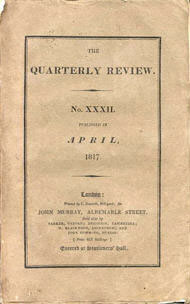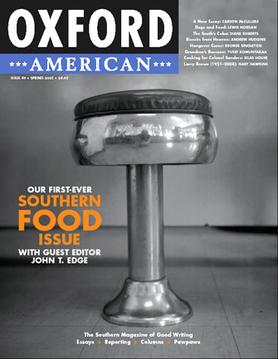Related Research Articles

Thomas Kennerly Wolfe Jr. was an American author and journalist widely known for his association with New Journalism, a style of news writing and journalism developed in the 1960s and 1970s that incorporated literary techniques. Much of Wolfe's work was satirical and centred on the counterculture of the 1960s and issues related to class, social status, and the lifestyles of the economic and intellectual elites of New York City.
This article contains information about the literary events and publications of 1869.

Letitia Elizabeth Landon was an English poet and novelist, better known by her initials L.E.L.

William Jerdan FSA, Scottish journalist, was born at Kelso, Scotland. During the years between 1799 and 1806, he spent short periods in a country lawyer's office, a London West India merchant's counting house, an Edinburgh solicitor's chambers, and held the position of surgeon's mate on board H.M. guardship Gladiator in Portsmouth Harbour, under his uncle, who was surgeon.
Richard Littlejohn is an English author, broadcaster and opinion column writer, having started his career as a journalist. As of May 2023, he writes a twice-weekly column for the Daily Mail about British affairs.

The Quarterly Review was a literary and political periodical founded in March 1809 by London publishing house John Murray. It ceased publication in 1967. It was referred to as The London Quarterly Review, as reprinted by Leonard Scott, for an American edition.
Henry Colburn was a British publisher.

Roy Greenslade is a British author and freelance journalist, and a former professor of journalism. He worked in the UK newspaper industry from the 1960s onwards. As a media commentator, he wrote a daily blog from 2006 to 2018 for The Guardian and a column for London's Evening Standard from 2006 to 2016. Under a pseudonym, Greenslade also wrote for the Sinn Féin newspaper An Phoblacht during the late 1980s whilst also working on Fleet Street. In 2021, it was reported in The Times newspaper, citing an article by Greenslade in the British Journalism Review, that he supported the bombing campaign of the Provisional IRA. Following this revelation, Greenslade resigned as Honorary Visiting Professor at City, University of London.

The Oxford American is a quarterly magazine that focuses on the American South.

Bookforum is an American book review magazine devoted to books and the discussion of literature. After announcing that it would cease publication in December 2022, it reported its relaunch under the direction of The Nation magazine six months later.

John Leonard was an American literary, television, film, and cultural critic.
Griffith Review is a quarterly publication featuring essays, reportage, memoir, fiction, poetry and artwork from established and emerging writers and artists. The publication was founded in 2003 by Griffith University in Australia, and was initially published by ABC Books. In 2009, Text Publishing became the Review's publishing partner and distributor. Therefore, the magazine has bases in both Brisbane and Melbourne. Julianne Schultz was the founding editor and has been publisher since 2018, when Ashley Hay was appointed editor.

Women in journalism are individuals who participate in journalism. As journalism became a profession, women were restricted by custom from access to journalism occupations, and faced significant discrimination within the profession. Nevertheless, women operated as editors, reporters, sports analysts and journalists even before the 1890s in some countries as far back as the 18th-century.
Rupert Christiansen is an English writer, journalist and critic.

The Best American Magazine Writing 2007 is a non-fiction book published by Columbia University Press, and edited by the American Society of Magazine Editors. It features recognized high-quality journalism pieces from the previous year. The book includes an account by journalist William Langewiesche of Vanity Fair about a controversial United States military operation in Iraq, an investigative journalism article for Rolling Stone by Janet Reitman, a piece published in Esquire by C.J. Chivers about the Beslan school hostage crisis, and an article by Christopher Hitchens about survivors of Agent Orange.
Events from the year 1782 in Scotland.
The history of journalism in the United Kingdom includes the gathering and transmitting of news, spans the growth of technology and trade, marked by the advent of specialised techniques for gathering and disseminating information on a regular basis. In the analysis of historians, it involves the steady increase of the scope of news available to us and the speed with which it is transmitted.
The Author & Journalist (A&J) was a monthly writers' magazine started by editor and author Willard E. Hawkins (1887–1970) and published in Denver, Colorado. It lasted until the issue of March–April 1969, by which time it was published by Larston D. Farrar in Washington, D.C. During the pulp magazine era, it was a de facto trade journal, alongside Writer's Digest, for the pulp publishers and freelance contributors. In the 1950s, the magazine gradually returned to mainstream literary concerns and markets.
References
- 1 2 Himes, Glenn T. (1998). "Corvey CW3 : L.E.L: The Literary Gazette Collection". Sheffield Hallam University . Retrieved 1 October 2009.
- 1 2 Thompson, Denys (1935). "Higher Journalism in the 19th Century". Scrutiny. IV:1. Retrieved 1 October 2009.
- ↑ Susan Matoff (January 2011). Conflicted Life: William Jerdan, 1782–1869, London Editor, Author and Critic. Sussex Academic Press. p. 79. ISBN 978-1-84519-417-8 . Retrieved 7 September 2013.